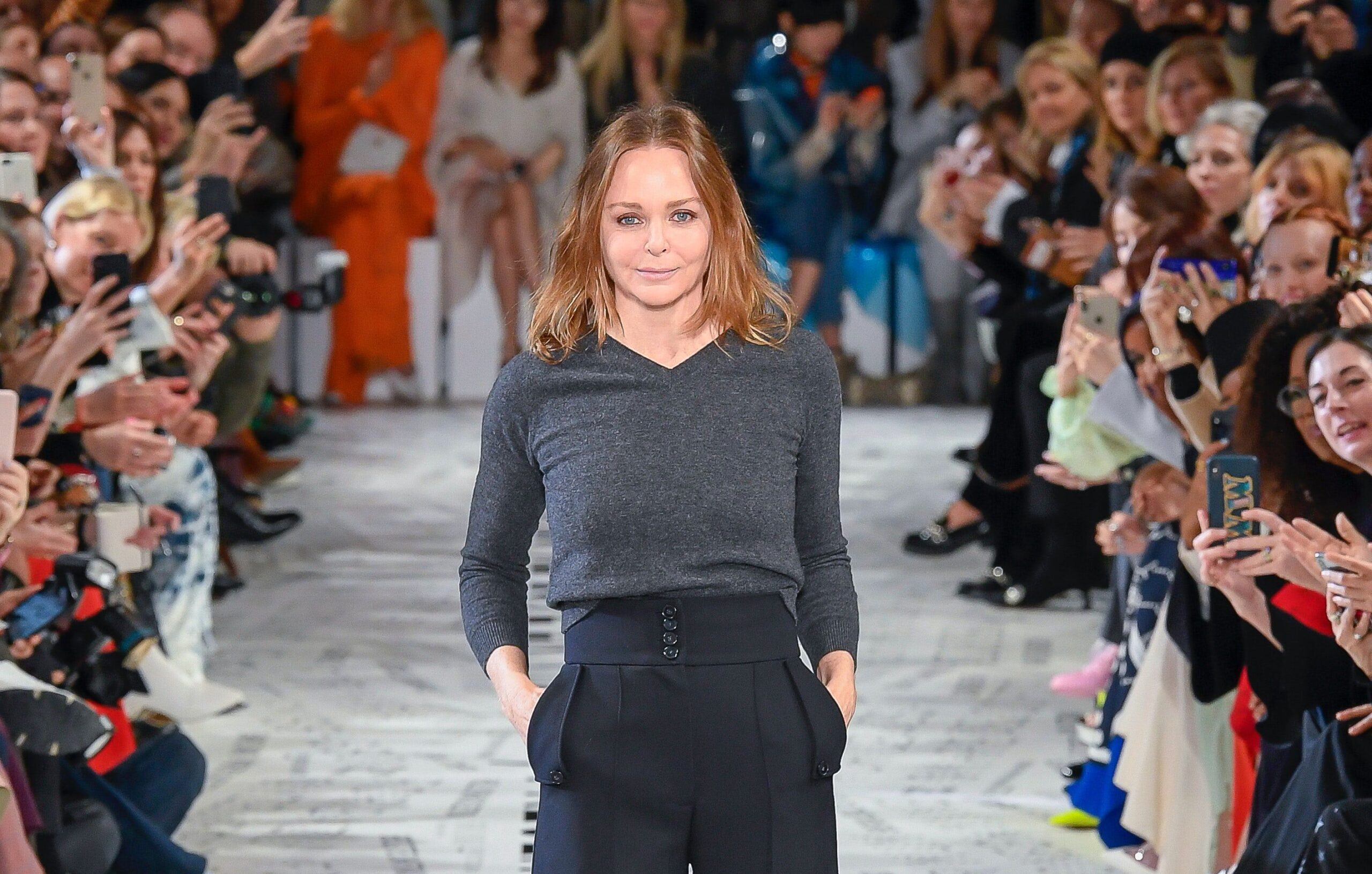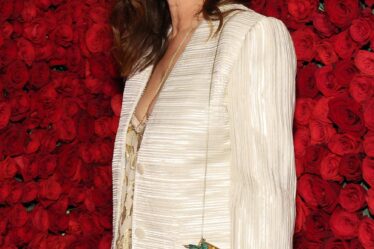
Stella McCartney is breaking into beauty.
This week, it emerged that the LVMH-owned label is set to enter the beauty sphere with a new clean skin care line. The launch, first reported by WWD, will drop early next month on the brand’s website, with three refillable products priced between $45 and $140.
With the line, the brand is set to join a long line of fashion labels that bank on beauty to boost their top and bottom lines, including longtime players Chanel, Dior and YSL and newer entrants like Gucci, Valentino and Hermès. These large heritage businesses have traditionally dominated the makeup and skin care sectors when it came to fashion brands in beauty, while fragrance was the typical route for smaller players, often via a licensing deal with a beauty giant like L’Oréal or Coty. But now, both smaller and younger luxury labels increasingly have ambitions to crack cosmetics and skin care too.
There’s certainly room for optimism in beauty, as growth of the broader industry has exploded in recent years. This year, Dries Van Noten and Off-White both released makeup products alongside their fragrance debuts. They joined the likes of Louboutin and Victoria Beckham, who both forayed into makeup before the pandemic. But it’s never been a harder time to enter the sector.
“It’s just a very crowded market right now, there are a lot of companies launching,” said Ariel Ohana, managing partner at independent investment bank Ohana & Co. “The key competitors those companies are facing now are not necessarily the other big fashion houses, but the indie brands that are launching in the market today.”
Why Brands Bet on Beauty
When done right, beauty can be a lucrative business for fashion houses. At brands like Dior, Chanel and Saint Laurent, it serves as an entry point into the brand, offering a way for aspirational shoppers who can’t afford a bag or shoes to buy into a label. In fact, beauty is the cash cow for these businesses, enabling them to reap the benefits of high gross margins and mass distribution without diluting or damaging their brand equity.
For luxury houses that are smaller in size than a Dior or a Chanel, establishing a robust beauty business can be a quick path to scale, while also serving as an effective customer acquisition tool that allows the next generation of luxury shoppers to start a relationship with a brand. Since Puig-owned Dries Van Noten launched its beauty collection in stores in March, the brand has seen a higher footfall of younger, first-time customers purchasing the line alongside existing, older clients, Ana Trias, Puig’s chief brands officer, told BoF in a May 2022 interview.
“You can reach a very vast audience, given the very low absolute average price of these products,” said Luca Solca, luxury goods analyst at Bernstein. “Brands hope to convert some of these consumers to other product categories … down the road.”
This dynamic becomes even more crucial amid the current market outlook. While the luxury sector has bounced back from the pandemic, the dismal state of the economy means small and medium-sized fashion businesses face more challenges ahead, as both middle class shoppers and high-spending clients become more discerning about purchases.
The fashion labels that stand to benefit most from this dynamic are the largest brands with the strongest DNA — Chanel, Louis Vuitton, Dior, Hermès — while smaller peers will likely find the market more challenging, as shoppers roll back discretionary spending on expensive clothes and high-end shoes.
Beauty, however, is a relatively recession proof category. The prestige beauty sector remained buoyant over the pandemic, and is continuing to show strong growth, with sales in the first quarter of 2022 up 19 percent year-on-year in the US, according to market research firm NPD. Amid tough times, beauty can be a beneficial business for smaller fashion brands to fall back on.
“Beauty is a more stable business compared to fashion,” said Wizz Selvey, founder of brand and retail strategy firm Wizz & Co. “The business model of beauty means a large proportion of sales are usually from products that are continuity lines, so less seasonal than fashion.”
From an M&A perspective, fashion brands that successfully crack the beauty market can demonstrate their ability to transcend categories, which is proof of strong brand equity, said Ariel Ohana, managing partner at independent investment bank Ohana & Co. That, in turn, she said, boosts a company’s attractiveness to investors.
“If you can demonstrate that your brand is not specific to a vertical, but it really can go across several verticals, then your brand is just so much stronger,” he said. “This just drives higher valuations and it drives higher marketability, meaning: this is an easier brand to sell tomorrow.”
Tom Ford is a good example: the company, which began as a ready-to-wear business, generates hundreds of millions of dollars a year selling fragrance and cosmetics via a licensing deal with Estée Lauder. Lipstick alone is said to drive $500 million in annual sales. Now, the brand is reportedly in talks with a beauty conglomerate about a deal that could fetch the label a $3 billion valuation.
Barriers in Beauty
However, that’s not to say that it’s easy for a fashion brand to crack beauty in today’s market.
With new players constantly entering the space, the sector is increasingly complex to navigate, especially for a brand whose expertise lies in clothing and accessories. In terms of infrastructure, small and medium-sized fashion brands face a huge scale disadvantage. Even Burberry, a £2.8 billion ($3.3 billion) megabrand, struggled to develop its beauty business internally, outsourcing management to Coty in 2017 just four years after bringing it in-house.
This is probably why recently, smaller fashion players have leveraged the expertise and spending power of bigger groups when entering beauty. Stella McCartney has its parent company LVMH, Dries Van Noten has its parent company Puig, and Off-White has its operating company, Farfetch-owned New Guards Group, whose new beauty arm is headed up by industry veteran Cassandra Grey, founder of beauty retailer Violet Grey.
Fashion brands do have an edge over other beauty start-ups in that they already have an engaged customer base, but that’s simply not enough to stand out. In today’s market, fashion labels can’t just launch a line and hope that brand name alone is going to sell a product.
“You have a lot of competition, and you have to bring either innovation or integrity to the market in terms of what you’re doing, that’s not just trying to leverage what you have already,” said Ohana. “In today’s environment, where there’s just so much happening in beauty, it’s not going to work.”
LVMH knows this — and views Stella McCartney as having an advantage. McCartney’s reputation as a sustainable fashion pioneer has the potential to give her credibility with beauty consumers seeking “clean” options. Stella McCartney’s beauty brand will reflect the fashion brand’s core values, Stephane Delva, director of new beauty projects at LVMH, said in a statement to BoF: her formulas are vegan and cruelty-free, her products are refillable and her packaging is recycled.
“Stella has pioneered the conscious fashion industry like no other,” Delva said. “There was an opportunity to build on her experience and expertise to change the skin care market too.”



